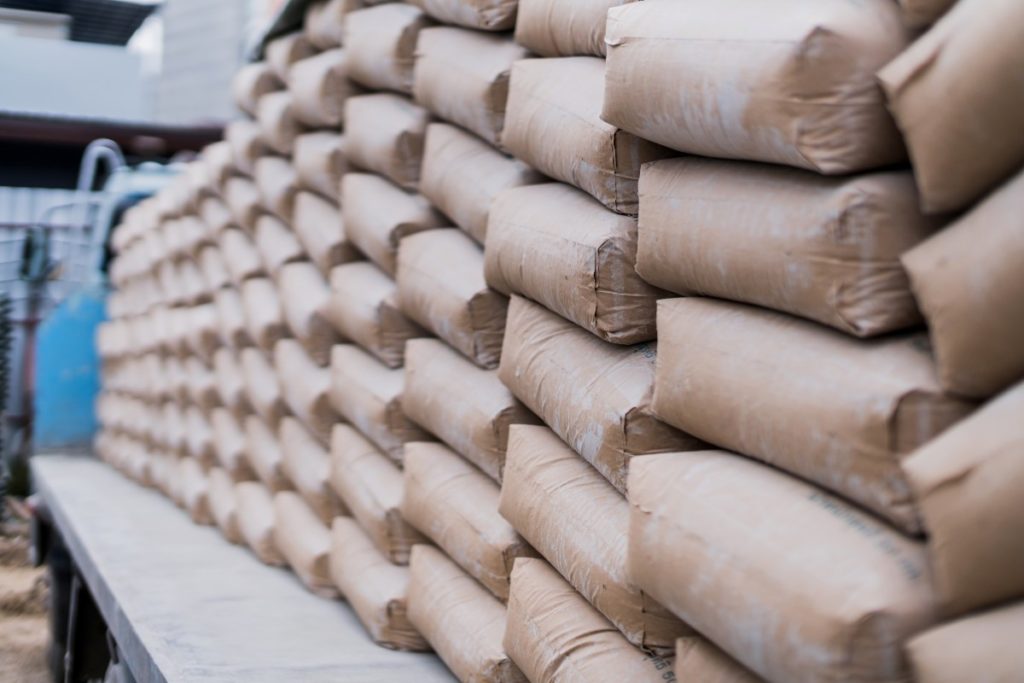We’ve all heard the terms concrete and cement. But what do they actually mean, and how do they differ from each other? Read on to learn the important difference between these two seemingly ubiquitous construction materials.
The Difference
While often used interchangeably, the terms concrete and cement refer to different things. Rarely used alone, cement is one of many ingredients in concrete. For instance, a house’s slab foundation is typically made of concrete which is essentially a mixture of several different ingredients including cement. To better understand the difference between concrete and cement, it helps to know how they are made.
What Is Concrete?
Concrete is a blend of water, aggregate and cement. Throughout the world, concrete is among the most commonly used construction materials in both commercial and residential applications. Its appeal centers on its nearly universal availability and its impressive durability and strength which combine to make it a practical building material.
Some key points about concrete include:
- Aggregates such as gravel, stone and sand make up about three-fourths of concrete.
- The water used to make concrete must be quite clean, bordering on drinkable.
- The aggregate must also be very clean because any organic contamination can cause the concrete to fail.
What Is Cement?
Cement is a binder made by blending iron, calcium, silicon, aluminum, and other substances found in limestone, clay, chalk, silica sand and iron ore. All of these ingredients are combined and superheated to create a rock-like substance that is ultimately ground into a very fine powder which we call cement.
Some key points about cement include:
- Modern Portland cement was first invented in the early 19th century by Joseph Aspdin, a British bricklayer .
- Cement can also be mixed with water and used as grout in masonry walls.
- Cement can be mixed with water and plaster and spread over masonry surfaces to make a smooth surface.
How Cement Influences Concrete Strength
Why Does Concrete Crack?
Like any other material, concrete will change in volume as it loses moisture and dries. In most concrete, this change will only amount to around 500 millionths or approximately 1/16 of an inch per 10 feet. Contractors create joints in concrete floors and pavement, so the concrete will expand in a nice, straight line at the installed joint when the volume changes due to shrinkage.
Why Does Concrete Sink?
It’s not uncommon for concrete to sink, whether it’s a driveway, basement or parking lot. While this can cause the concrete to crumble and crack, it rarely has anything to do with the concrete itself. Most often, it’s the underlying support, or lack thereof, that leads to this type of concrete failure.
As water moves beneath concrete slabs, it often washes away the supportive soil. Over time, this can create a void, which causes the concrete surface to collapse downward into the empty space.
Concrete Repair Methods
The most expensive way to fix failing concrete, slab replacement is really only necessary in severe instances. Unfortunately, many homeowners spend far too much money on total concrete replacement when a much less expensive option is available. In many cases, mudjacking will restore sinking or cracked concrete for a much lower price.
A time-tested, cost-friendly concrete repair solution, mudjacking is a reliable way to return sinking concrete to its original position. The process is simple: After drilling a small hole into the settling concrete, the contractor injects a wet slurry filler underneath the surface to fill gaps. As the slurry hardens, it elevates the concrete until it’s flush with the ground-level surface.
Mudjacking costs approximately 60% less than complete concrete replacement, making it highly attractive to cost-conscious homeowners. The entire process can typically be finished in just one day, often within a few hours.
For nearly a quarter of a century, AAA Concrete Raising has served Colorado homeowners and businesses all around the Denver metro area. Our innovative equipment eliminates the need for loud, awkward machinery, ensuring timely, efficient work that doesn’t disrupt the local neighborhood.
AAA Concrete Raising brings the best materials and leading-edge expertise to completely fill and support the voids beneath concrete slabs. This ensures a safe, functional concrete surface and avoids the need for total slab replacement. Contact our team to learn more.
